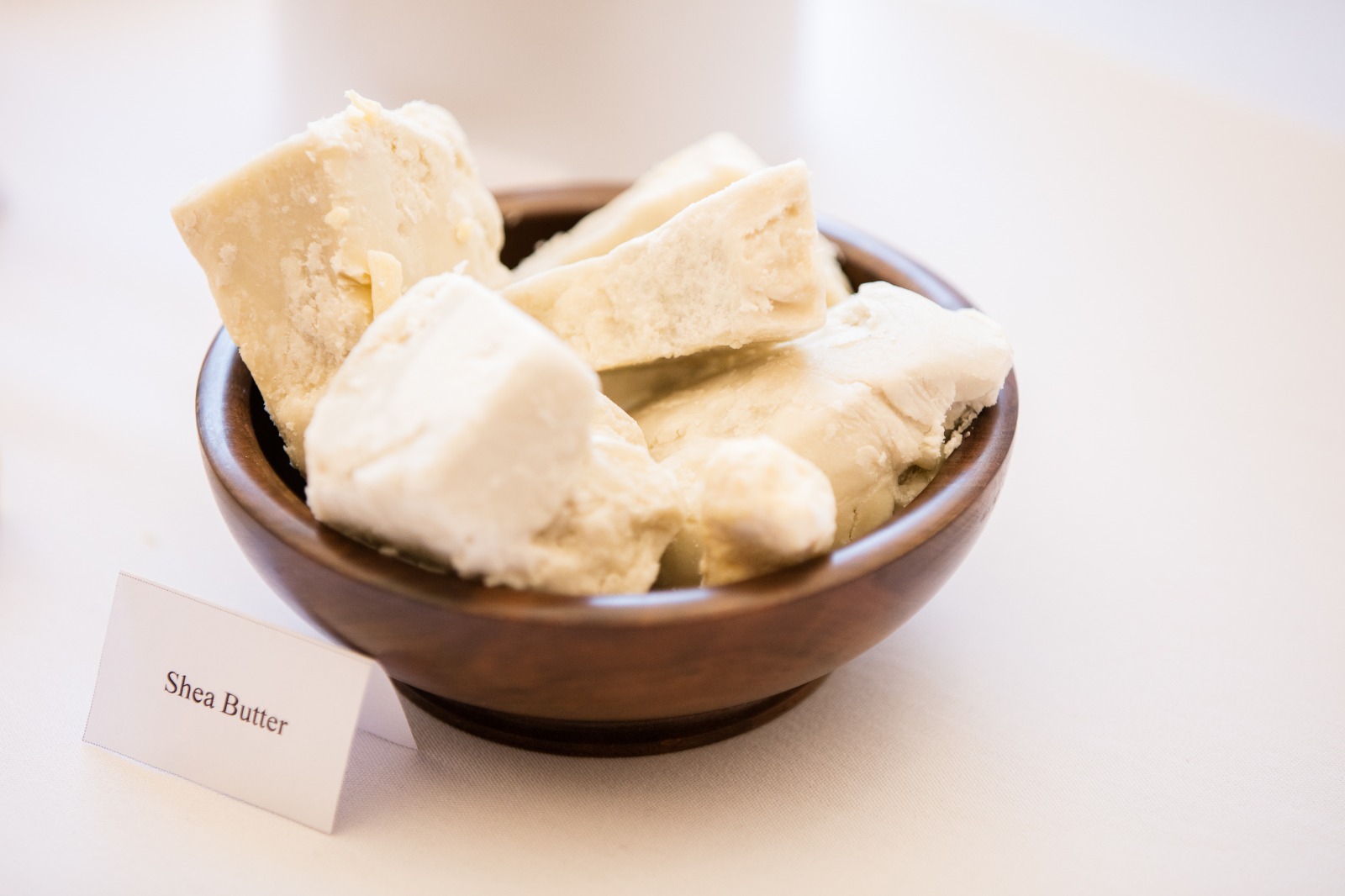The History of Shea Butter
Shea has been a vital cosmetic and skincare ingredient in Africa for centuries, if not thousands of years. It’s currently known all over the world for its high moisture content and moisturizing characteristics. Shea trees reach a height of 33-49 feet and have a highly branched, circular growth pattern. The thick, spongy bark is fireproof, shielding the trees from the frequent wildfires that decimate the surrounding vegetation. Trees begin bearing fruit after approximately ten to fifteen years, peaking at an average of 20 years, and producing nuts for up to 200 years. Shea fruits develop and ripen for four to six months after the trees bloom with creamy white petals for a month or two. When fully mature, the green fruits develop a rich brown color. Each tree may produce 30 to 45 pounds of fruit each year on average, with peak yields of up to 90 pounds. Each shea fruit is about 2″, with a thin layer of nourishing pulp surrounding the large nut from which shea butter is extracted. Their territory largely overlaps the Sahel region of Africa, which stretches 5,400 kilometers (3,360 miles) from the Atlantic Ocean to the Red Sea in the east, in a belt a few hundred to a thousand kilometers (600 miles) wide and covers more than 1.2 million square miles. The Sahara Desert to the north and wet savanna to the south divide this semi-arid region. It’s made from the edible nut of the Karite tree, which can be found in Ghana, Mali, Burkina Faso, and other West African Savanna Grasslands. Shea butter is collected from the small, almond-like fruit produced by this wild-growing tree. The tree takes up to 50 years to grow and is not cultivated. The shea tree is protected in most parts of West Africa due to its economic and health benefits. Shea Butter is regarded as a helpful agent for internal and exterior body cleaning by many Africans. It’s also used as an aftershave, a hair balm for dry and brittle hair, and on drumheads to keep them from drying out and cracking. It is a sacred dish for many in the traditional African religion of Yoruba.

Shea Butter is one of the most versatile ingredients in the world. It has been used for centuries to moisturize skin, hair, and nails.
Nourish, replenish, moisturize, and heal your hair and skin with this emollient-rich beauty product. Shea Butter Benefits: Relieves symptoms of eczema and similar skin irritation Moisturizes dry cracked skin Boosts collagen production Fades scars and stretch marks
Raw Shea Butter is the perfect natural moisturizer that helps to smooth, soften and beautify your skin. Raw Shea Butter can also be used for hair care. It does not clog pores or cause breakouts on the skin, which makes it a great product for all skin types. The shea butter is made from unrefined shea nuts, which are grown in West Africa where they have been harvested for centuries before being imported to the United States. Shea butter has many uses including helping to reduce wrinkles, stretch marks, and eczema.
Raw unrefined Shea Butter is the perfect product for all hair textures and skin types. It can be used on its own or as an ingredient in your favorite natural beauty recipes. This emollient-rich beauty product will nourish, replenish, moisturize, and heal your hair and skin with its high concentrations of vitamins A & E. Help keep the skin in optimal health but also protect it from being damaged by the sun’s harmful rays!



